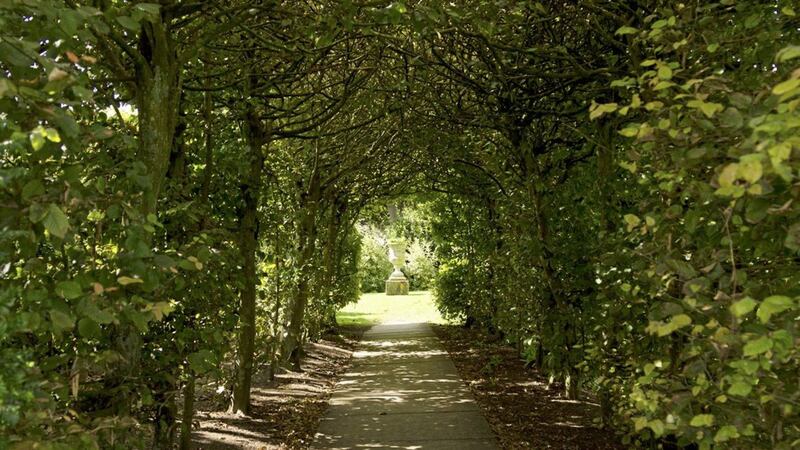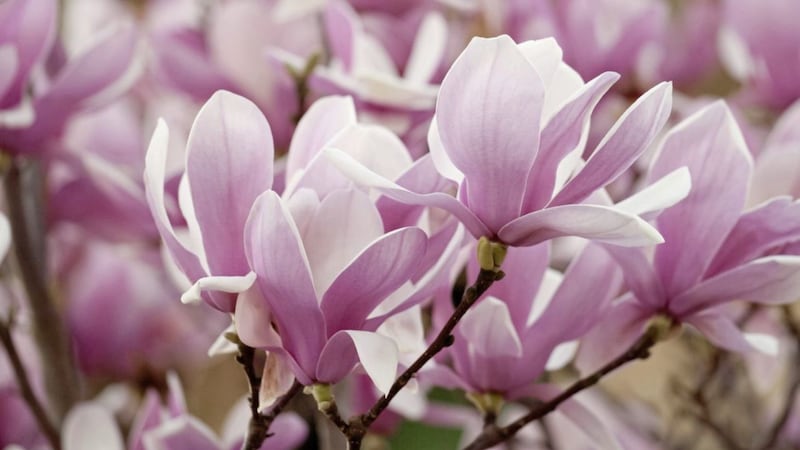ON ONE level I can perhaps understand people’s reluctance to create shade in their garden. Due to the prevalence of cloud cover over Ireland, it can be argued that we are in semi-shade most of the time, with grey skies easily outnumbering the blue. The typical Irish gardener's failure to embrace shade may therefore be a reflection of the fact we get relatively little sunshine compared to our Mediterranean counterparts, who create shaded areas out of necessity.
But even in our temperate climate, shade still has value, especially on a warm summer’s day. An area of the garden that is sheltered from direct sunlight, a cool place to where you can escape in order to avoid the occasionally oppressive heat.
Of course there are parts of the garden that can have shade imposed on them, especially in mostly north-facing gardens which can be starved of direct sunlight for much, if not all, of the day by a building or a similarly solid structure. These dark areas are often the ones that need brightening up most but some people don't bother trying because they wrongly believe nothing will grow there.
This is true for a lot of plants, but there’s still plenty for which shade, quite literally, is the coolest place to be.
It’s important to note, however, that all shade isn’t the same. At one end of a continuum you have damp shade where the soil is moist and rich, while at the other extreme you have dry shade with dusty, impoverished soil that would even struggle to support weeds.
Damp shade is generally not a problem, with any risk of water-logged ground being reduced with every plant you add. The soil in dry shade on the other hand usually needs plenty of organic matter to make it conducive to growth.
Here’s a selection of shade-tolerant plants that will brighten even the darkest corner...
:: Lungwort (Pulmonaria) – A slightly odd but nonetheless eye-catching perennial that makes a useful addition to any shady area, lungwort has funnel-shaped flowers in the spring which change from pink to blue. Known in some quarters as 'Mary-spilt-the-milk' and 'soldiers and sailors', its low growing green leaves are dotted with white. It makes excellent ground cover and has cultivars which are red (Pulmonaria officinalis 'Rubra') and white (Pulmonaria officinalis 'Sissinghurst White’).
:: Geranium phaeum var. lividum 'Joan Baker' – If there's one plant species that has a variety for every location in the garden it’s geraniums – where would we be without them? Getting your tongue around Geranium phaeum var. lividum ‘Joan Baker' is the difficult bit, as growing this plant in shade is very straightforward. Tall for a shade lover, with big pale lavender flowers, ‘Joan Baker’ ranks alongside its hybrid half-cousin Geranium x monacense ‘Muldoon’ as a shady garden essential.
:: Clematis alpina 'Blue Dancer' – Few plants demonstrate their lust for light better than a far-reaching clematis. The near-indestructibility of C. alpina 'Blue Dancer' is well known in gardening circles and it is among a minority of clematis which can survive away from full sun. Not as rampant as most, this deciduous climber produces medium-sized bell-shaped violet-blue flowers in spring. Can also be grown in a container.
:: Royal fern – This hardy, majestic-looking fern boasts bright green fronds and is perfect for creating a cool woodland atmosphere in an area of damp shade. In summer it develops rust-brown fertile fronds, which are sometimes mistaken for flowers.
:: Periwinkle (Vinca minor) – An evergreen native that makes great ground cover in a shady spot, periwinkle will happily grow in those dark corners inhabited only by slaters and spiders. It is a vigorous grower, however, so needs to be cut back hard in spring to keep them under control.








